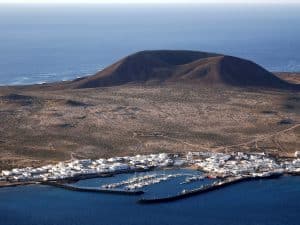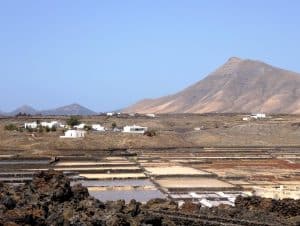Cueva de los Verdes – The Green Caves, Lanzarote
Approaching from LZ 1, follow the signs for Jameos del Agua, shortly before you’ll see a signpost for Cueva de los Verdes. Guided tours begin on the hour, sometimes more frequently depending on the influx of visitors. Tours are held both in Spanish and in English. However the English translation unfortunately is only a brief summary of the more informative Spanish version.
As you leave the heat, light and noise of the surface, and descend fifty meters into the cool, dimly lit, and watery underworld, you’ll feel like you’ve been transported into a different reality. This is a one-hour magical adventure through the underground cave system filled with light and sound installations.
Cueva de los Verdes translates as The Green Caves or Caves of the Greens?, which they are not. The name of the cave system dates back to the Verde family, who in the 17th century discovered the caves and used them as a hiding place from pirate attacks. Your imagination will run wild as you meander through the winding labyrinth of caves, feeling as though you’re journeying to the centre of the world.
In the summer months (July-September) it is recommended for individual visitors to visit The Green Caves in the afternoon, so that crowds can be avoided.
MON-SUN 10am-6pm
In summer (July-September) until 7pm
Last tour at 5pm (6pm)












































 La Graciosa is usually only viewed from
La Graciosa is usually only viewed from 














 Mirador de Salinas is signposted and offers a great view over Salinas de Janubio, that depending on the light, appear in various colors. The salt works are a remnant of the past. In the first part of the 20th century up to 10 000t of salt were produced each year. It’s best to leave your car in the parking lot of the restaurant Mirador las Salinas. Parking is free and from the terrace one can enjoy views over the salt flats.
Mirador de Salinas is signposted and offers a great view over Salinas de Janubio, that depending on the light, appear in various colors. The salt works are a remnant of the past. In the first part of the 20th century up to 10 000t of salt were produced each year. It’s best to leave your car in the parking lot of the restaurant Mirador las Salinas. Parking is free and from the terrace one can enjoy views over the salt flats.




